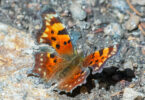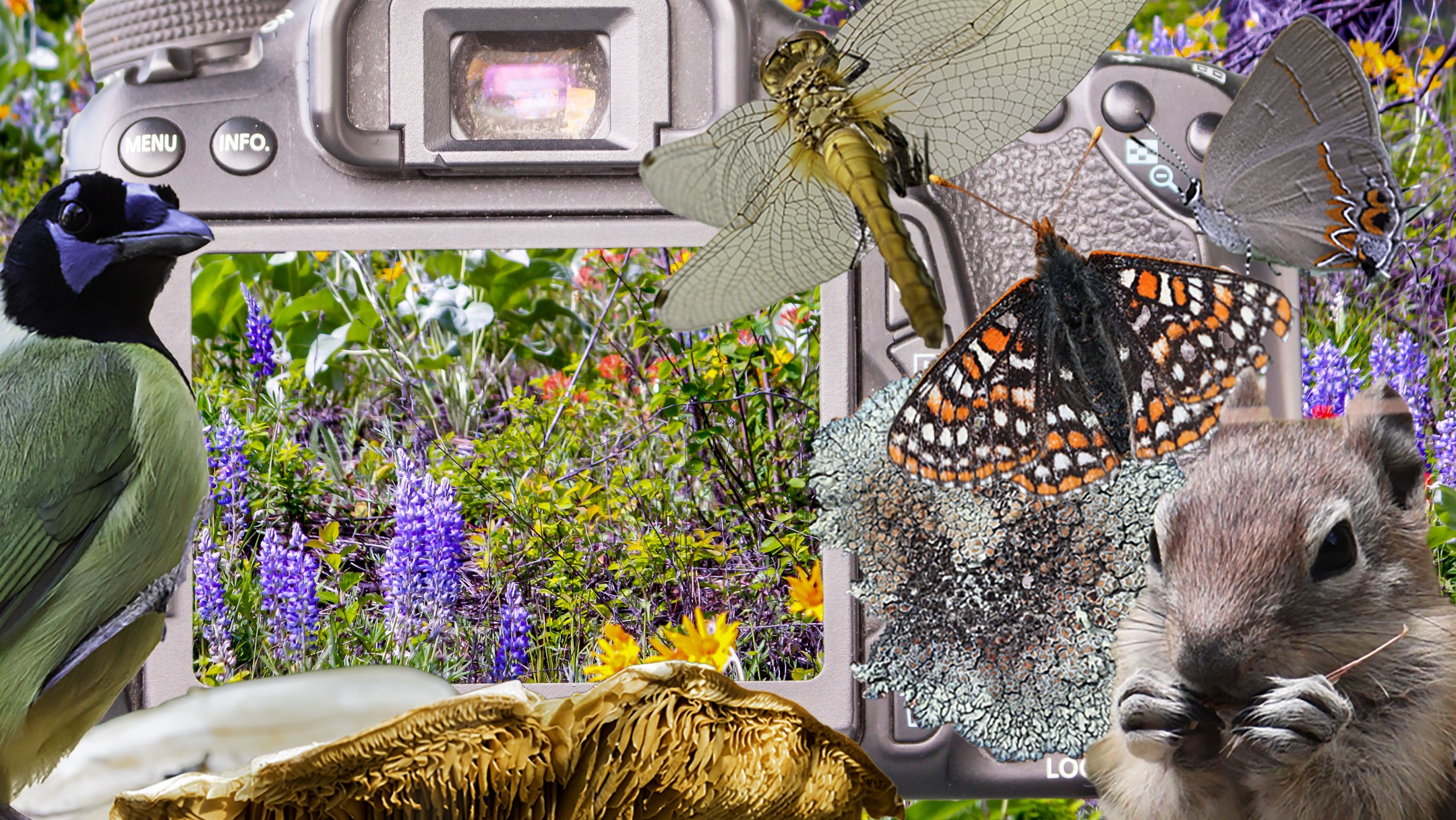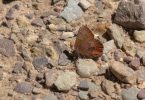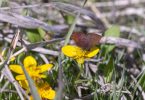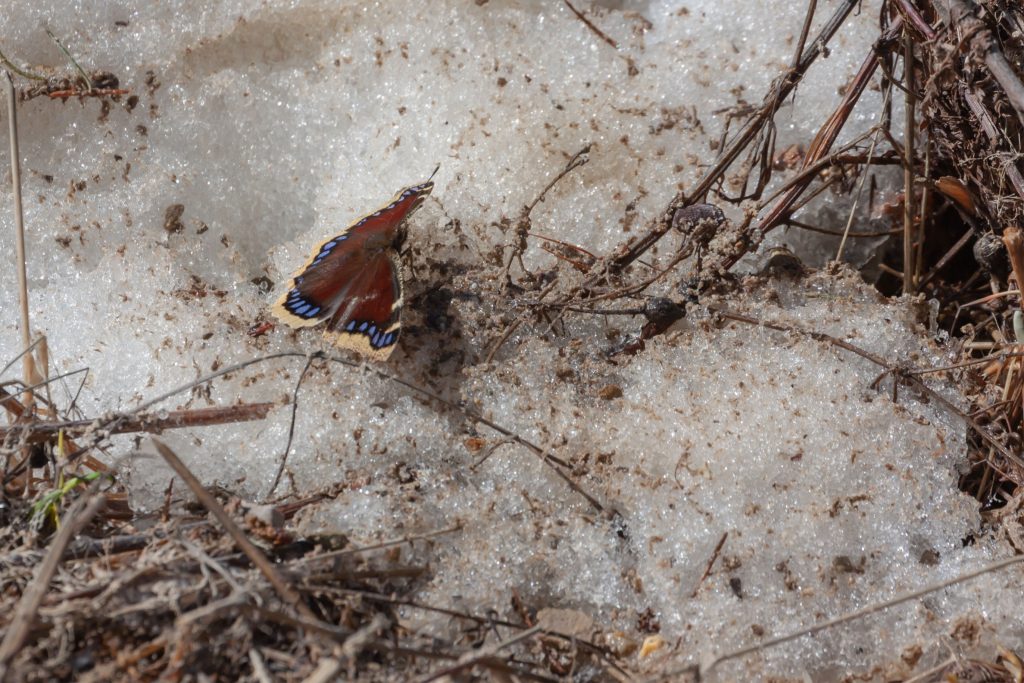
Eight species of Comma and Tortoiseshell can be found flying in early spring (late March/early April) in western Montana. They can because they overwinter as adults. It is surreal to see butterflies with snow on the ground. Where does one look for this spectacle? Few, if any, wildflowers are in bloom. Even so, the eight species that overwinter don’t rely on nectar as much as other species. Mud is key for finding early spring butterflies.
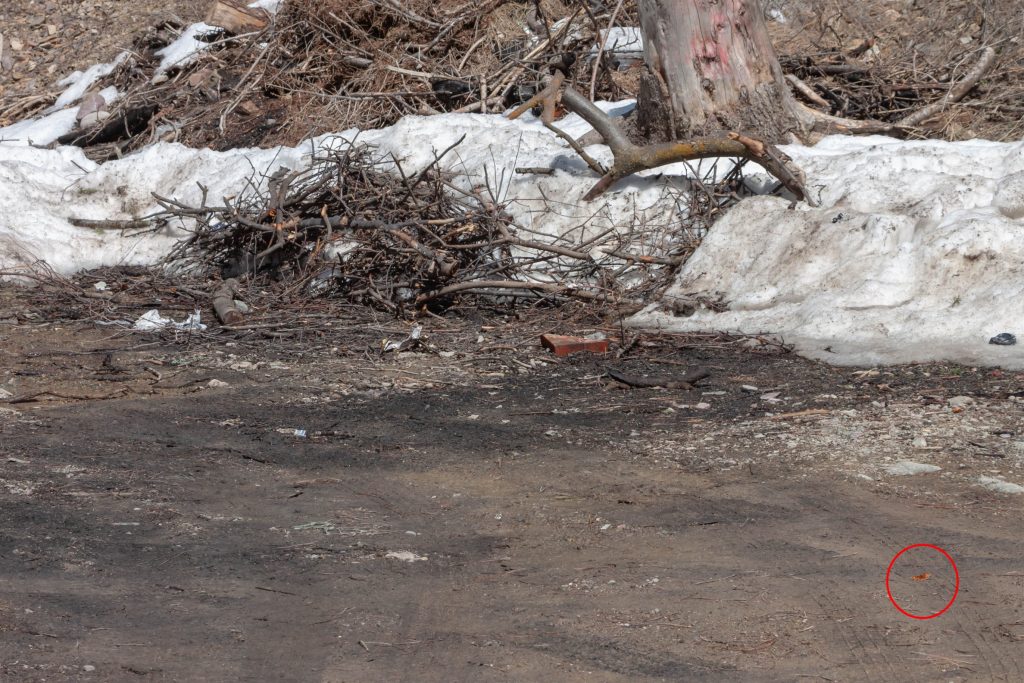
Search Image
The photo above gives you a good search image. Notice this is not a pristine trail. It is a pull out for a gated road that has been used as a dump site/burn pile. Burn pile residue seems especially attractive to butterflies at any time of the year. I’m guessing the residue has organics that butterflies need. At this time of the year it doesn’t seem to be the requirement. Slurry of mud is key though.
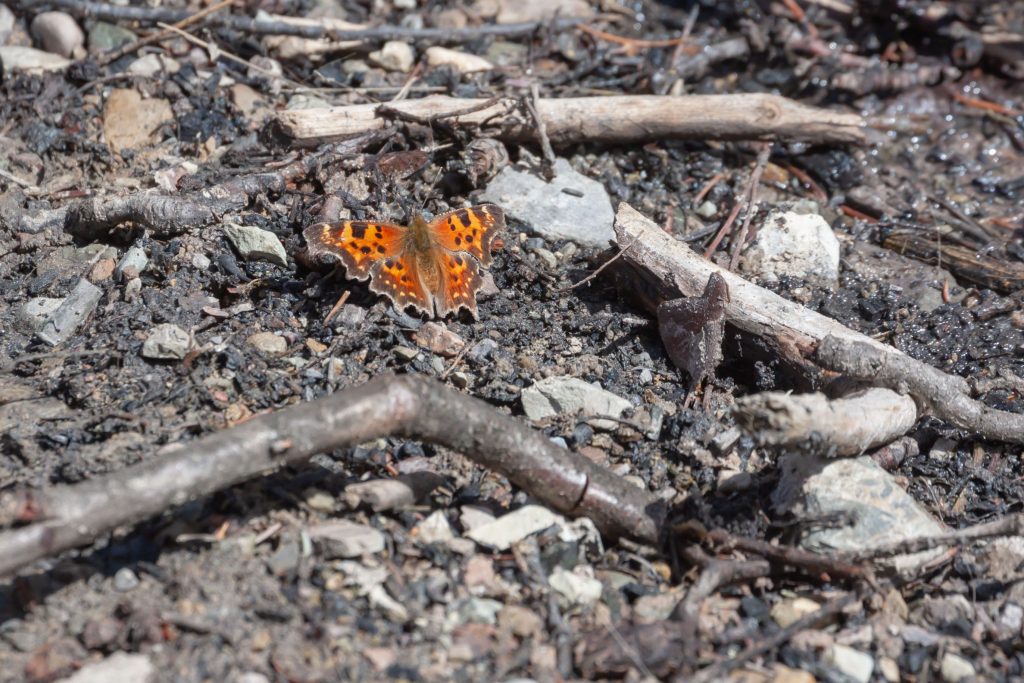
Trails can be good search areas too, if they are muddy in spots. The key again is mud. This behavior of attending muddy spots is referred to as “puddling“, necessary for important nutrient uptake. What is missing is the proximity of the mature Ponderosa Pine just out of camera frame. All these butterfly are forest dwellers. Secondly, the elevation at this spot is about 4,000 feet, important for density/quality of habitat. Thirdly, the snowmelt is concentrated by gravel road shoulders and ditches. Perfect for shallow pools and moist soil expanses. This habitat persists well into summer. And many more species will utilize this resource.
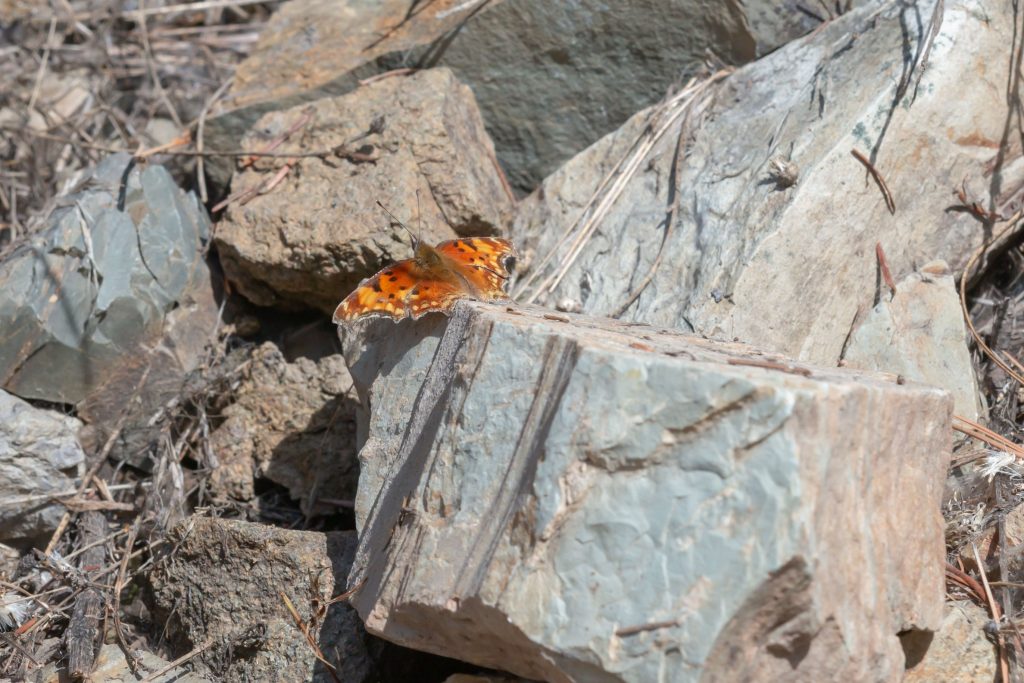
So finding early spring butterfly only requires one to drive gravel roads through mature conifer forest looking for muddy road shoulder and associated wet ditches. Stop the vehicle when the conditions are met and slowly walk looking for flushing insects. A caveat, many mountain roads in the American West are not passable until much later in the spring. Learn which roads open sooner than others. Good luck in your adventure 😉

